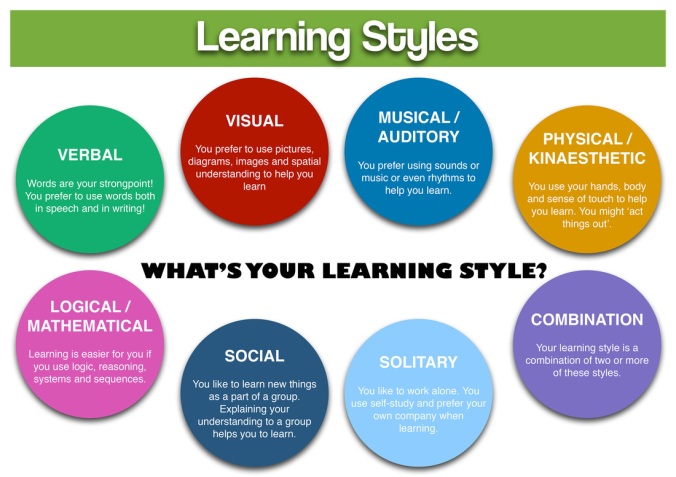In The End
The Set-up:
Let’s play a game. No, but really, go play this for a few minutes in between writing your dissertation, analyzing data, or procrastinating on youtube looking at cat videos (you know who you are…).
The game, called The End, is structured such that it asks a number of questions that philosophy classes might include in their curricula. For example, this game allows you to work through views on what exactly you are (a mind? A body? Both?), beliefs about death, fate, whether it important to have children, alterity, etc.
It’s pretty much this in game form:

While not all encompassing, it serves as a good primer for the types of philosophical questions we might ask in Knowledge and Reality or in a Killing Things course (No creatures, human or otherwise, were harmed in the course except for fictional blue whale, in a helmet, filled with water, on a trolley track…).
Current Approaches:
During my first semester here at Tech and as a TA for K&R, I had my students play the The End at the beginning of the year. But, I never asked them what they thought at the end of the semester and I didn’t ask them to go play it again to see what, if anything, had changed! Alas, I am not currently a TA for K&R and The End doesn’t quite mesh the class I TA for currently.
Lacking a video game analog for Morality and Justice, I have students in all my sections fill in a “I Believe…” form at the beginning of the semester. This form gives them an idea of the types of questions we will be discussing, allows them to share what they think and why (prior to any philosophical reflection), and it gives me a heads up concerning what weeks tensions are likely to run high in each section. If half of the class thinks Bambi is perfect for dinner and the other half are card-carrying members for PETA, the food ethics week is bound to be interesting, for example.
This form is all on paper and, for the most part, I don’t use it again until the last day of class. After reading the pieces this week, I wonder what would happen if, instead of a form that they get back at the end of the semester, they had a character that they had to interact with for the entire semester. What if, as opposed to abstract concepts and relations of concepts that they struggle to link together, they had a center character, an avatar, that they could manipulate, drop into different scenarios, and reflect on critically without feeling threatened? I’ll come back to this in a moment, since I have an idea, but first I want to process through why I think such an approach works in other ways for philosophy and then bring it back to games (video or, as I suspect is more likely, a group RPG).
When In Philosophy…:
In philosophy we deal with a lot of complex, absurd, and downright awful ideas and beliefs. A struggle many of my students have at times (and that I still have) is working through a topic when you feel something personal is on the line. If you are a libertarian for example, and are against both taxes and reparations, it may be difficult to separate out the implications of the arguments we look at that say “hey, you can’t be a libertarian and against both taxes and reparations” from what that would mean for you as a person identifying as a libertarian. As a TA I want to support my students as they begin to grapple with the arguments, give them space to start linking the implications of various views together, and eventually let them reflect on how that applies to their lives; but when everything is personal, as many ethics questions are, I haven’t always had success with this and they haven’t always been wiling to reflect.
One approach I currently have that has worked to open up a space for reflection is to let my students play “games” when it comes to difficult topics:
- During the week when we talk about abortion, we play a game where students are divided into groups and given a third of a dialogue that contains common (but philosophically problematic) arguments for/against abortion. They are then asked to describe the problems with each of the common arguments and they historically do an excellent job at zeroing in on the problems even for views that they may hold themselves. In fact, I usually have 3-5 students tell me that they realized that their own view is problematic for the same reasons they found the character in the dialog’s view to be problematic. Without prompting, they reflect on what the game meant for their own views while, if it was open discussion, usually the conversation tends to devolve into ad hominems, polarization of views, and defensiveness.
- For implicit bias week, I have them pair up and do an iceburg activity with one another. They write down all of the assumptions they make about one another, share their assumptions, get to communally guess things about me (it is quite entertaining), and by the end we tend to have an open conversation about the kinds of biases and assumptions we make without the intermediary step of shame and guilt. When I have tried to have more discussion based conversations about bias things have tended to go the “I don’t see color” route and folks get stuck on the carousel of shame. Not so when it’s a game.
Aside from the games, I incorporate two thought experiment animals (Qaly the Koala and Chubby the Whale) in my classes since I have found that they too allow us to have discussions that might otherwise be difficult to process. They also allow my students to visually see representations of concepts (such as validity) and in-text examples that otherwise would be relegated to my badly drawn stick figures on the blackboard. Like the games, I think that Qaly and Chubby allow my students to reach a critical distance from the course material and to conceptualize it in a way that is meaningful, accessible, different, memorable, and ultimately mutable. With this in mind, I want to go back to the games.
Games:
Games, much like Qaly and Chubby, would offer my students an opportunity for initial impersonal engagement with philosophical materials and concepts that will eventually come into conflict with one another. In “Four Things Lecture is Good For,” Robert Talbert says that lecture can be great for giving context and to see relations of ideas. I see games as a means to achieving that end. In fact, I wonder if the slightly impersonal nature of the avatar would allow my students to recognize the inconsistencies in the views of the avatar and then later reflect on what that would mean for their own views without feeling threatened or forced to reflect. I wonder if it would allow them to recognize the context of their views and engage with the context and connections more so than traditional methods of presentation.
Concerning personalization of curricula, I think Lacoste (whom I initially misread as Lakatos) is on to something that could be implemented in a philosophical game. While the set up proposed in their article, “Teaching Innovation Statement,” may not work as-is for all classes, I think it is adaptable to the philosophy classroom and a philosophical game. What if, for the subjects a student was actually interested in for a philosophy class, the game spawned additional areas to explore that would go deeper into the questions about, say, the Problem of Evil and the connections that issue has to other areas in the discipline. In current courses we spend a week on each topic at most, but I think a gaming platform would give students the license to continue to explore areas that they are actually interested in and to see the connections they may not have seen before. In seeing these connections, what would it look like if they were building their world with one another outside of the classroom in a forum where they were invested in the communal creation of dialogue and conversation about our more central, sacred, and deeply held beliefs?
Lacking any coding ability, I don’t think a video game like The End is the route I intend to take in furthering the inclusion of games in my classroom. But this idea of a community space and forum where folks are building a community, engaging in intellectual discussion, and being accountable to one another for the space and content has given me an idea of sorts.

The Idea/Initial Musings:
Most of my students are not philosophers and take the course as a distribution requirement. However, there are groups of students that I can group together based on major or area. With a bit of tinkering, I think that at the least I can sketch easily mutable outlines for the topics that can be personalized to hit on questions that are relevant for their areas and, in being so relevant, make the things we talk about more meaningful and applicable to their lives after the course. This is not a full blown game, of course, and nothing compared to what Mark C. Carnes describes in “Setting Students’ Minds on Fire,” but I think it will lay down some important groundwork for an eventual game.
Starting points:
- The students will do the “I Believe…” forms just like they normally do but then they will be asked to make an avatar (probably a pretty fantastical one) to use/edit the rest of the semester.
- Much like they all have personalized validity animals, they will have personalized philosophy avatars. Maybe the validity animals can be companions for their main characters.
- As we progress through the course and the landscape each week, their avatars will be asked to address this problem, go on that adventure, relate this new thing back to the old thing, and ultimately they will have to decide the path their avatar takes.
- For certain topics, there will be major specific events or prompts that relate the material of the week to their lives and professions.
- While not a video game, it can also have additional content that can be co-created by the folks in the class with the facilitator of the course and passed on to the next generation of gamers.
- They will be asked to contribute content and reflection in a co-authored “rule” book throughout the semester.
- ??????
I don’t think I can get a more solid sketch of the idea done until after I try implementing a few things this semester (such as major specific prompts to understand the concepts of utilitarianism vs deontology) and see feedback from my students. But, it’s a start.


 This week I was reading through Mark Canes article ‘Setting Students’ Minds on Fire’ when I came across the last paragraph in his article it made me reminisce about my first years as an undergraduate student.
This week I was reading through Mark Canes article ‘Setting Students’ Minds on Fire’ when I came across the last paragraph in his article it made me reminisce about my first years as an undergraduate student.



 Now, do I believe the “Choose Your Own [Learning] Adventure” method will result in the success of every student? Absolutely not. Similar to the Choose Your Own Adventure books, not all learning paths lead to a “happy ending”. There is always risk involved when one assumes responsibility for their own outcomes. The path to learning is riddled with unforeseen pitfalls and booby traps that can fell many an adventurer. Still, I think such a method is an intriguing alternative that may provide [student] adventurers with the opportunity to actively engage in the learning experience. However, there will always exist a select group of adventurers who prefer to have a “guide” outline their path for them.
Now, do I believe the “Choose Your Own [Learning] Adventure” method will result in the success of every student? Absolutely not. Similar to the Choose Your Own Adventure books, not all learning paths lead to a “happy ending”. There is always risk involved when one assumes responsibility for their own outcomes. The path to learning is riddled with unforeseen pitfalls and booby traps that can fell many an adventurer. Still, I think such a method is an intriguing alternative that may provide [student] adventurers with the opportunity to actively engage in the learning experience. However, there will always exist a select group of adventurers who prefer to have a “guide” outline their path for them.



